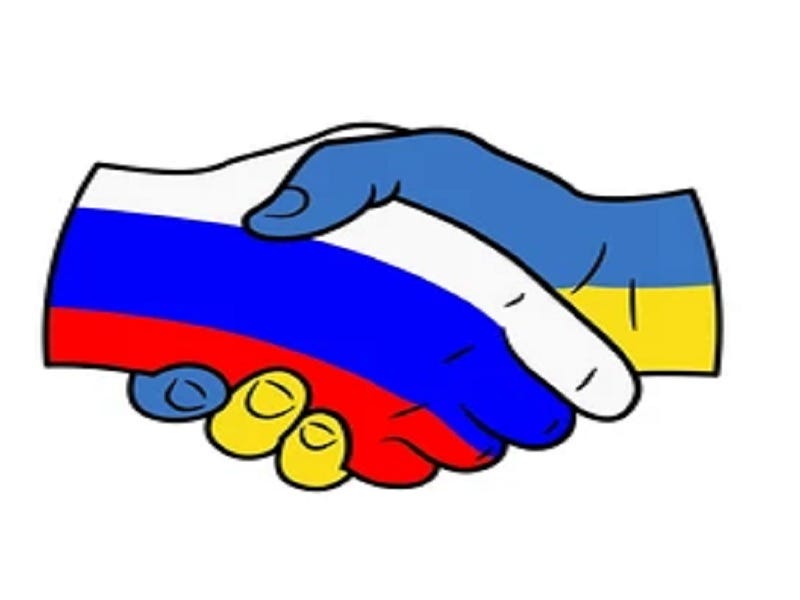The recent sequence of events that was explained in this analysis, together with the fact that it all happened in the run-up to Indian External Affairs Minister Jaishankar’s trip to Moscow, strongly suggests that some influential American policymakers are at the very least seriously considering this scenario trajectory.
The latest phase of the Ukrainian Conflict, which is actually a US-led NATO proxy war on Russia through that crumbling former Soviet Republic, might end up with a ceasefire sooner than many might expect. At present, both sides continue to officially pursue maximalist outcomes, but a stalemate of sorts is quickly settling in along the Line of Control (LOC). This is due to three factors: Russia’s partial mobilization of experienced reservists fortifying the LOC; the destruction of Ukraine’s energy infrastructure that’s creating socio-economic and military chaos behind the LOC; and the West’s limited military-industrial capabilities leading to an inevitable reduction in the scale, scope, and pace of lethal support to Kiev.
Amidst the convergence of these three interconnected trends, the US is already signaling its openness to unofficially moving beyond its proxy’s maximalist outcome in the Ukrainian Conflict. This is evidenced by three recent developments: the ruling Democrat elite’s psy-op aimed at manipulating the public into thinking that the aforementioned reduction of military support is due to another Russiagate conspiracy; the Biden Administration reportedly pressuring Zelensky into backtracking on his self-imposed ban on holding talks with Russia; and the US’ reported interest in having India mediate a new round of talks between Kiev and Moscow whenever the time is right.
The last-mentioned development reported by the New York Times carries with it outsized significance since Indian External Affairs Minister Jaishankar (EAM) is visiting Moscow from 7-8 November, during which time he’s expected to discuss the gamut of his rising Great Power’s strategic partnership with Russia. It therefore shouldn’t be seen as a coincidence that his trip was preceded the day prior by their article about the possibility of India brokering peace between the US’ Ukrainian proxies and Russia. In all likelihood, he’ll probe the possibility of his country playing such a role whenever the time is right, which might be sooner than later for the reasons mentioned in the preceding two paragraphs.
Seeing as how observers predict that the Republicans will make major political gains after Tuesday’s midterms, the “public pretext” could then be established for the US reducing its lethal aid to Kiev like was earlier explained due to its military-industrial complex’s limited capabilities. In advance of that happening, it therefore follows that the US has an interest in exploring how receptive Russia would be to India playing the mediation role that the New York Times reported upon the day before EAM Jaishankar’s trip to Moscow. There’s no doubt that the Kremlin would agree to this considering the unprecedented closeness of their relations that have comprehensively expanded since February.
India has successfully emerged as the geostrategic kingmaker in the New Cold War between the US-led West’s Golden Billion and the jointly BRICS- and SCO-led Global South of which it’s a part as a result of its careful balancing act between both de facto blocs. Having Delhi mediate between Moscow and Washington’s proxies in Kiev would publicly confirm that India is indeed the irreplaceable balancing force in the global systemic transition, which aligns with Russia and the US’ interests. Each wants to accelerate their shared partner’s rise as an independent pole of influence in the emerging world order, albeit for different reasons, to which end they’re likely to agree to give India this pivotal diplomatic role.
Of course, there are also several variables that could offset this mutually beneficial scenario for eventually reaching a ceasefire in the Ukrainian Conflict. Some ethno-fascist elements within that crumbling former Soviet Republic might sabotage the peace process, as could their partial patrons in the UK, which has its own interests in indefinitely perpetuating this proxy war that could potentially put it at odds with the US. Furthermore, those within the US’ permanent military, intelligence, and diplomatic bureaucracies (“deep state”) who have similar interests in continuing that conflict could also obstruct this scenario as well. It therefore shouldn’t be taken for granted that India will mediate a ceasefire.
Nevertheless, the latest sequence of events that was explained in the first two paragraphs of this analysis, together with the fact that it all happened in the run-up to EAM Jaishankar’s trip to Moscow, strongly suggests that some influential American policymakers are at the very least seriously considering this scenario trajectory. The US will likely continue supporting Kiev’s latest offensives along the LOC across the rest of the present month but might then settle for having India mediate a ceasefire sometime afterwards, especially upon the predicted Republican Congress taking office in January. It’ll of course remain to be seen what happens, but none of this is as far-fetched as many might think.





If this article is accurate, this would signal a colossal failure of the Russia-hating Pole Breszinski's 'Grand Chessboard' plan to destroy and quarter Russia using Ukraine as pawn. And the confirmation that the US's hegemony using its NATO/Nazi vassals has reached the beginning of its end. Multipolar world I welcome you!